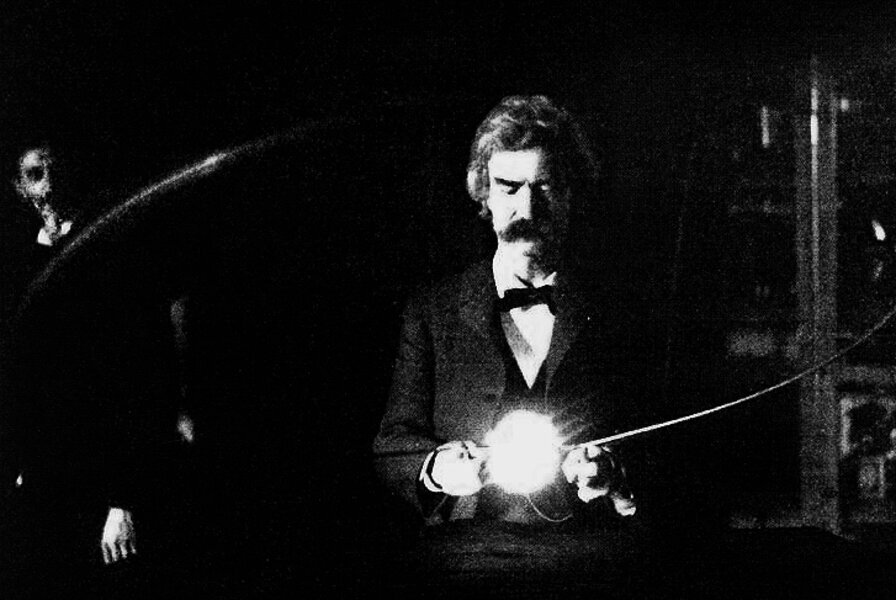If Mark Twain were alive today, he'd be reading this on an iPad
Loading...
There's something perennially old-timey about Mark Twain, who, as Google reminds us, would have turned 176 today. Perhaps it's his prose style, which critics invariably describe as "homespun." Or perhaps it was how his most celebrated stories tended to chronicle an antebellum culture that, even as he wrote, was fading from memory. Or maybe it was that white suit that he started wearing near the end of his life, just like the gentlemanly but ultimately backward Colonel Grangerford in "Huckleberry Finn."
But to his contemporaries, Twain was more like Hank Morgan, the visitor from the future in "A Connecticut Yankee in King Arthur's Court." A consummate early adopter, Twain was among the first writers to use a typewriter. He also boasted that he was the first person in his part of New England to have a telephone in his house. If Mark Twain were alive today, he'd be using the voice command feature on his iPhone to update his Twitter feed while riding in a Google-piloted Tesla Roadster.
Twain, who was close friends with the original Tesla, held three patents. The first, issued in 1871, was for an adjustable and detachable garment strap that was intended to replace suspenders. The second, issued two years later, was for a scrapbook with adhesive strips, and the third, issued in 1885, was for a history trivia game.
"Mark Twain's Adhesive Scrapbook," as it was called, was Twain's only profitable invention. And there were a few other financial disasters. In the 1880s Twain unloaded the bulk of his wealth, and a good portion of his wife's, on the Paige Compositor, a machine designed to replace human typesetters. But it turned out to be the Laserdisc of printing machines, never quite catching on before being surpassed by better technology, in this case the Linotype machine.
Perhaps Twain's strangest technical obsession was the telharmonium, a 200-ton electrically powered organ that transmitted music over telephone wires. The device, one of the earliest electronic instruments, was said to faithfully reproduce the sounds of the flute, clarinet, and some stringed instruments. Twain had telharmonium performances piped into his home on New York's Fifth Avenue.
"Every time I see or hear a new wonder like this I have to postpone my death right off," he told The New York Times in 1906. "I couldn't possibly leave the world until I have heard this again and again."





